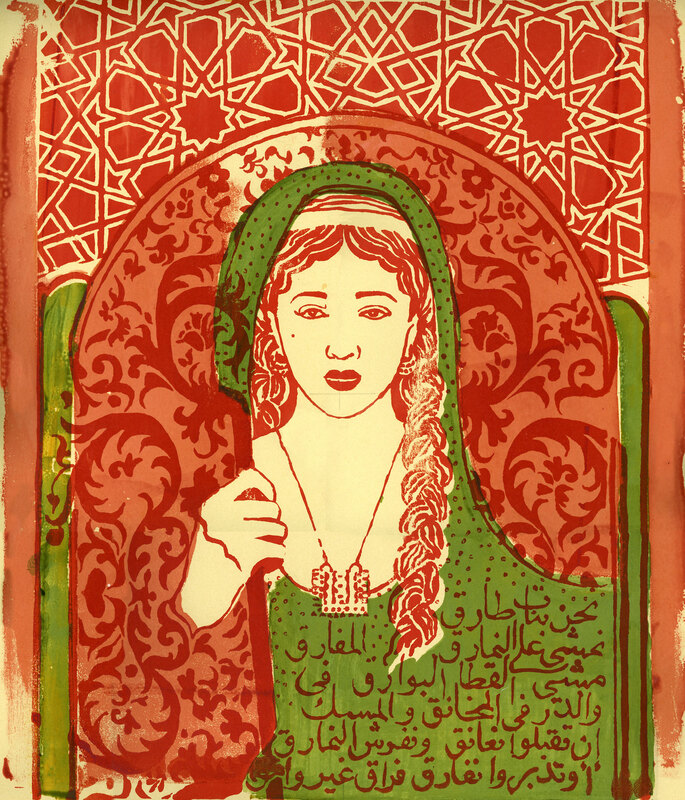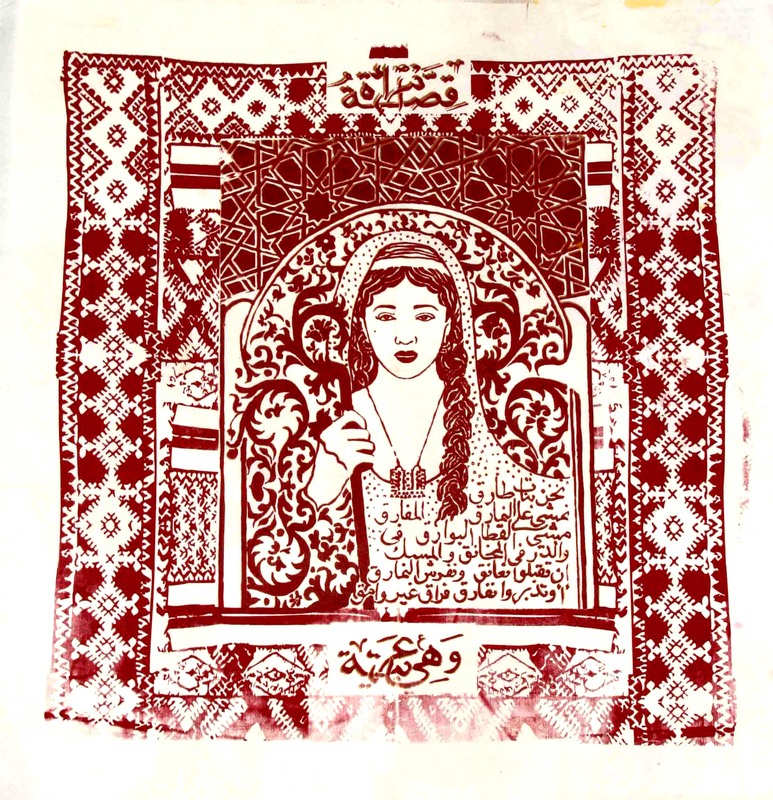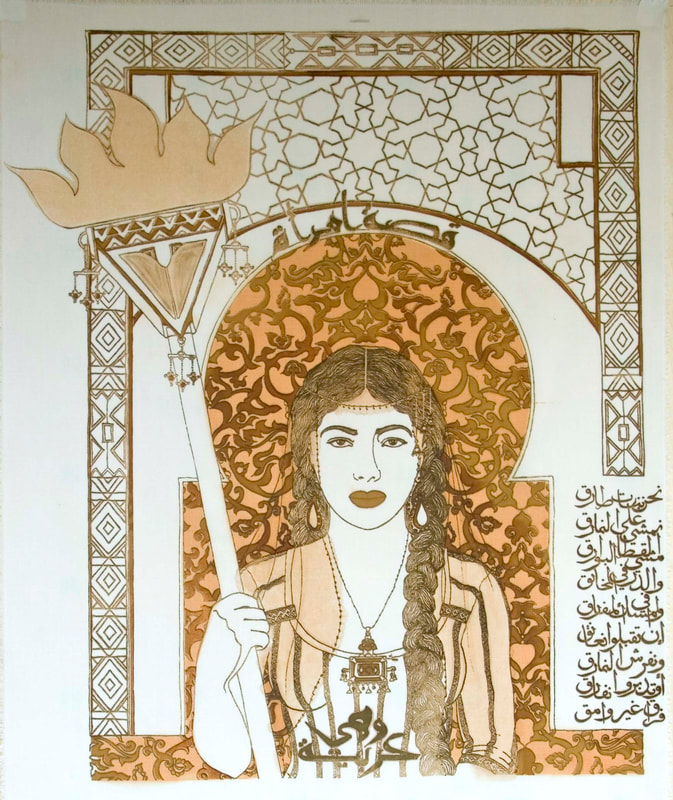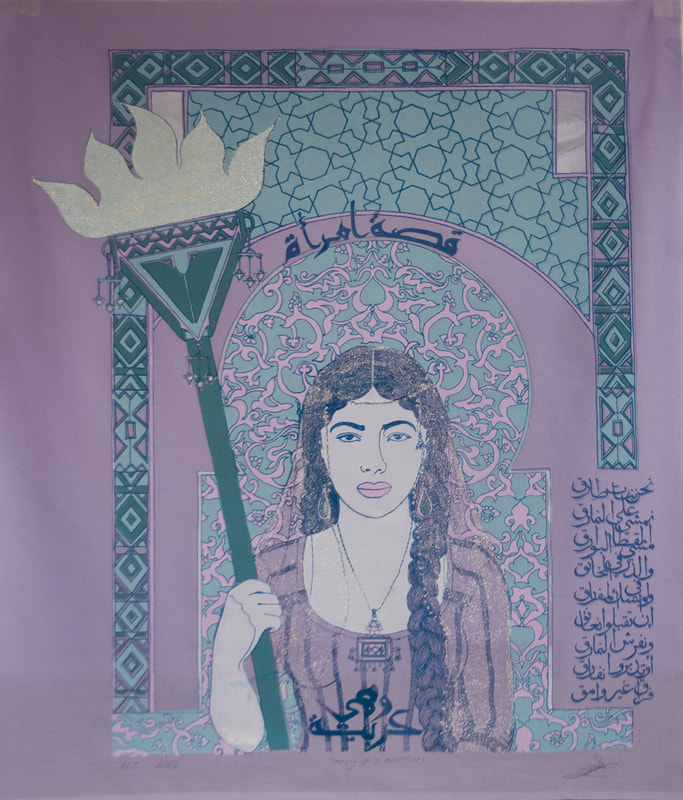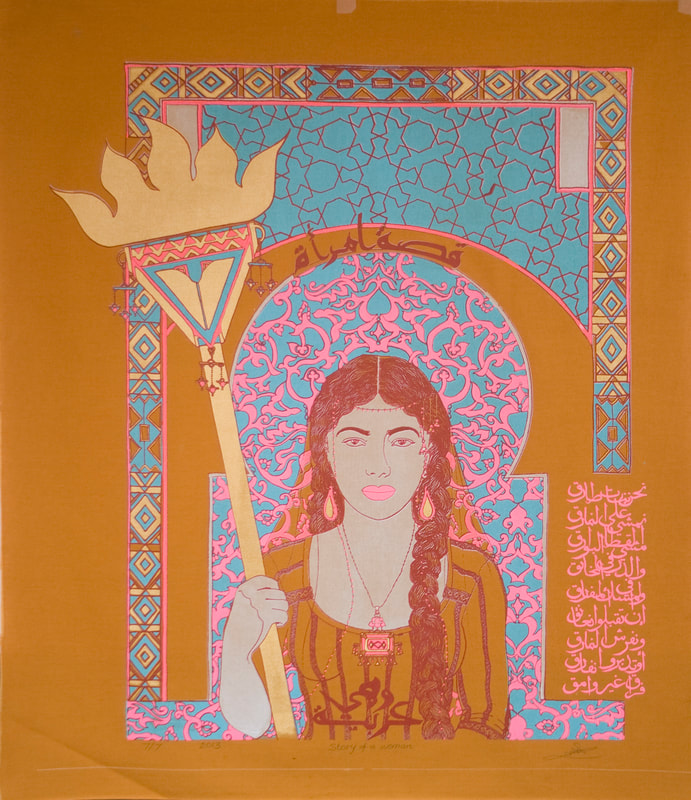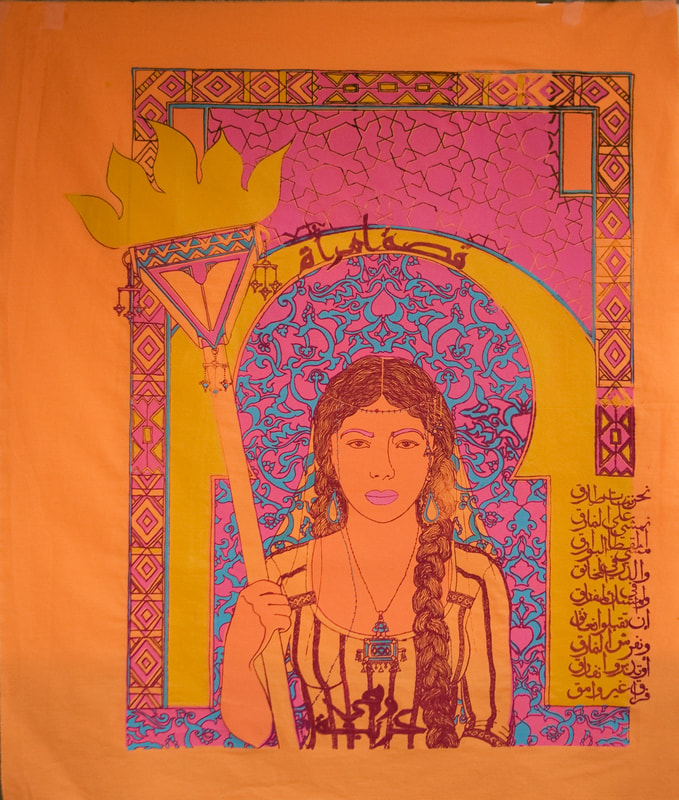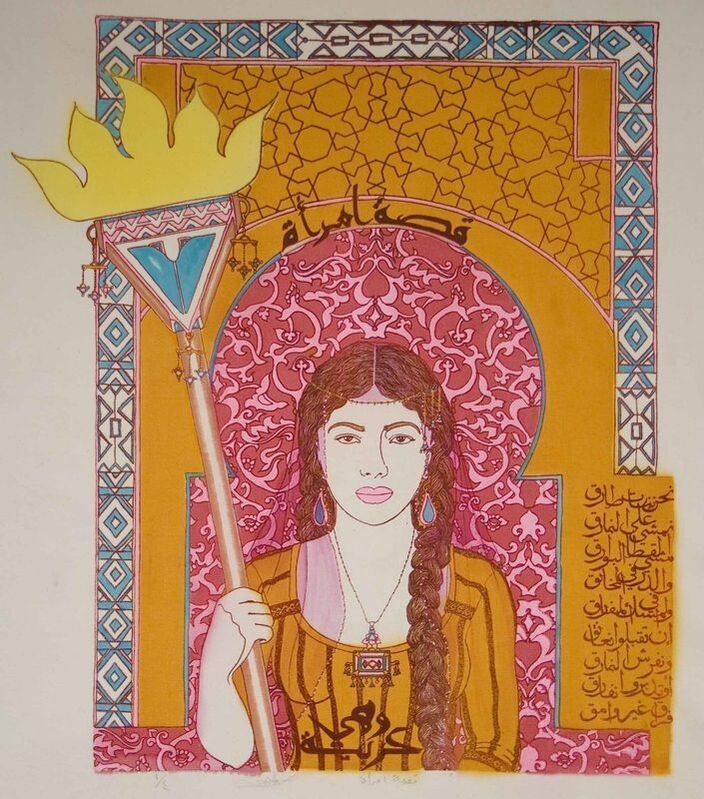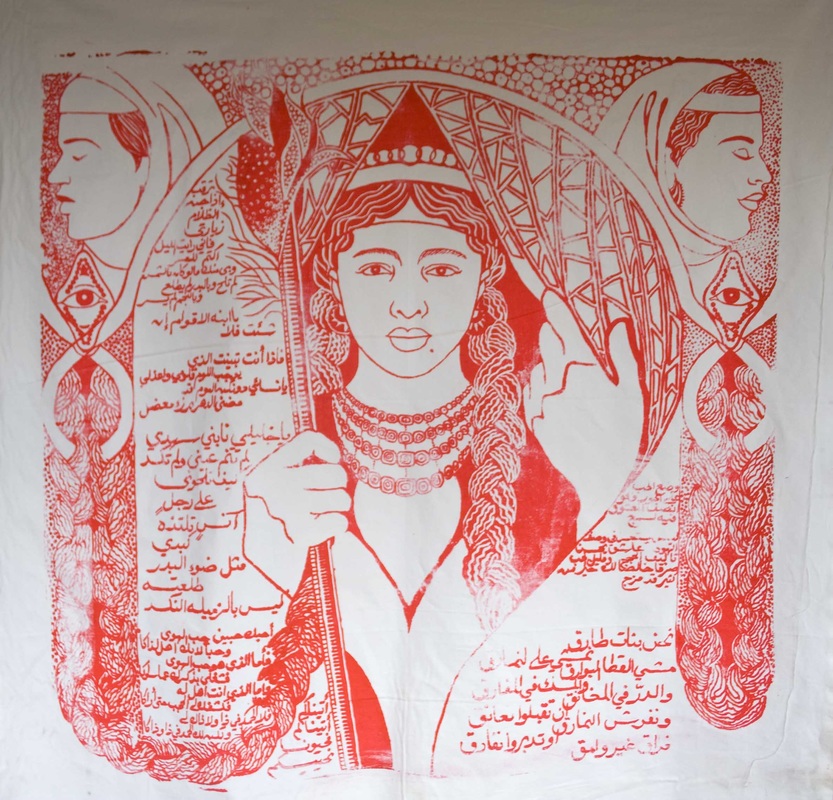This is an imaginary portrait of Hind Bint 'Utbah, an Arab woman who claimed her freedom and asked her father, not to marry her out without her consent because, she told him, she was wise enough to choose what’s right for her. She married Abu Sufyaan who became the leader of Mecca, the birth place of Islam. Her son Mu'awiyah became the founder of the Umayyad dynasty in Syria.
Liver Eater
2016
Screen printing. Ink on paper
2016
Screen printing. Ink on paper
Story of a Woman
2015
Screen printing. Ink on paper.
18 x 24 inches - 46 x 60 cm
Edition: 25
2015
Screen printing. Ink on paper.
18 x 24 inches - 46 x 60 cm
Edition: 25
This is an imaginary portrait of Hind Bint Utbah. Adorned with jewelry, she is holding a large torch with her right hand and covering her braided hair with a shear veil. Geometric and floral Islamic design cover the background and Bedouin design frame it. Above the portrait there is Arabic calligraphy saying: Picture of a Woman; Below it there is calligraphy saying: And She is Arab. On the lower right side of the image there is calligraphy of a poem that was attributed to Hind Bint Utbah. This poem translate as follows:We are daughters of the star We walk on cushions Like dazzling grouses With musk in hair And pearls in scarves If you go forward (in battles) we will offer hugs And will spread out the cushions If you retreat we'll leave without regret.
هذه القطعة الفنية تحكي قصة هند كرمز لقوة المرأة العربية يستمد منه احفادها من نساء و رجال معنىً مضيئاً للأنوثة ينفي التبعية ويؤكد تمتع المرأة بحس الأستقلال كفرد إيجابي في المجتمع. الطابع الفني التقليدي يظهر في الزخرفة النباتية والهندسية وفي خط الثلث ولكن يتصدره طابع غير تقليدي في الفن العربي وهو التشخيص. والتشخيص هنا ليس تشخيصاً واقعياً بل هو أقرب للتشخيص الزخرفي حيث الخطوط هي المقومات الأساسية وليست الظلال وحيث تبدو تقاطيع الوجه و حنايا الجسم مثالية ومهندسة. هند المعتدة بنفسها تبدو بكامل زينتها تحمل مشعلاً وتنظر إلينا بقلق مشوب بحزن وكأنها تهيب بنا أن نتذكر توقيرنا للأنثى الذي أضعناه. وهي تظهر لنا من خلال إطار من الزخرفة التقليدية لتؤكد انتماءها للحضارة الإسلامية وأن معنى الأنثى إنما زاده الإسلام عمقاً. اللوحة أيضاً تدعي العصرية على عدة أصعدة. فأولاً احتفالية الألوان تذكرنا بالأغنيات العربية المعاصرة ذات الكلمات الحزينة والموسيقى الفرحة. وثانياً الجمع بين التشخيص الزخرفي والزخرفة التقليدية هو من الميول العصرية في الفن. وثالثاً الخط العربي هنا لا يتقيد بأصول الخط التقليدي وأنما رُسم ليشابه خط الثلث والمغربي بواسطة خطوط محيطية.
|
A Song From Quraish
2003 Screen printing, ink on raw canvas 5 feet x 5 feet - 150 x 150 cm Edition: 3 More of this series |

